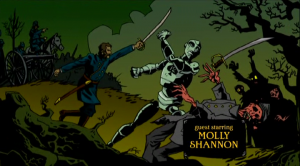Date Read: 6.11.08
Book From: BurningBuilding, now Personal Collection
Reviewer: Kakaner
The summer I discovered Isaac Marion‘s fiction (or more correctly, Emera discovered and I piggybacked on that), I ran around my friends group trying to get everyone to read his stories. I basically spent all of a work day on BurningBuilding engrossed in his short stories, sometimes reading some more than once. Out of all these, the one I repeatedly recommended was Anna, a story I believe is impossible not to love.
Anna is the first person tale of a young ghost who wanders through earth and time, and one day, falls in love with a young boy and follows his life. The story is a mixture of emotions, atmosphere, and a small bit of dialogue that somehow come together to produce a sweeping epic effect. Its simple but beautiful prose is proof that one doesn’t need embellishments and flourishes to successfully tell a story.
The word that always comes to mind when I read Anna is “floating”. First of all, Anna… well, she floats, so I believe it is appropriate. But the word also captures the way Anna lives out her “life”, carried by a wind of time, sometimes skipping 10 years, sometimes 100. This ephemeral quality is also skillfully conveyed by Sarah Musi‘s illustrations, which feature a lot of flowing lines and a bit of whimsy.
In particular, Anna contains one of my favorite scenes ever:
“One day in high-school the boy met a beautiful girl, and they kissed under the football bleachers. Anna turned away, and wished for a strong wind to blow her far from there, but the air was still. She floated into a mountain instead, moving through the rock for miles until she reached the mountain’s heart, and closed her eyes there, feeling the warm, dark crush of the mountain’s life grinding around her.”
I love the idea of withdrawing into the heart of a mountain to mourn. It is such a powerful, majestic image (or maybe I just love mountains and am obsessed with Now We Have a Map of the Piano by Mum), and I like to believe the mountain also lends Anna strength for the rest of her journey.
As of this entry, Marion still has 25 remaining copies of Anna. These are gorgeous, self-published illustrated books on very fine, sturdy paper. If this sounds interesting, you should definitely purchase a copy before Marion becomes too famous =)
Go To:
Isaac Marion
Purchase Anna
Online Sample
Anna (2008) [E]
